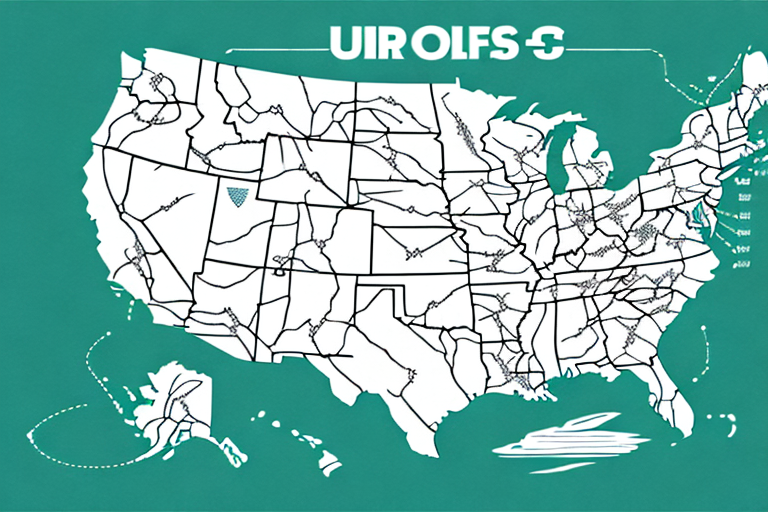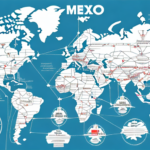Understanding UPS Shipping Rates Around the US
If you're in the business of shipping packages, UPS is one of the most reputable and widely-used carriers across the United States. However, understanding how UPS determines its shipping rates can be complex. In this article, we'll break down the various factors and fees that influence your UPS shipping rates and offer strategies to help reduce your costs.
How UPS Determines Shipping Rates
UPS shipping rates are calculated using a multifaceted system that considers several key factors:
- Package Weight and Dimensions: Heavier and larger packages typically incur higher shipping costs.
- Destination and Origin: The distance between the shipment's origin and destination plays a significant role in pricing.
- Delivery Speed: Faster delivery options, such as next-day or overnight shipping, are more expensive than standard ground shipping.
- Item Value: High-value items may require additional insurance, increasing the overall cost.
Additional fees may apply based on the type of shipment or the level of insurance required. For instance, expedited shipping options and specialized services like UPS Ground with Freight Pricing can influence the final rate.
UPS also offers discounts for frequent shippers or those who ship in large volumes, making shipping more affordable for both businesses and individuals. By exploring all available shipping options and understanding the factors that influence rates, you can make informed decisions to optimize your shipping strategy.
Factors that Affect UPS Shipping Rates
Your UPS shipping rates are impacted by several critical factors:
- Weight and Size: Larger and heavier packages require more resources, resulting in higher costs.
- Distance: Longer distances between origin and destination increase processing and handling times, raising the shipping rate.
- Service Type: Choosing express or overnight services over standard ground shipping will elevate costs.
- Insurance Level: Higher insurance coverage for valuable items leads to increased shipping fees.
- Seasonal Demand: During peak seasons like holidays, shipping rates may rise due to higher demand.
Understanding these factors can help you anticipate shipping costs and plan accordingly, ensuring that your budgeting aligns with your shipping needs.
How to Calculate UPS Shipping Rates for Your Package
To accurately determine your UPS shipping rates, follow these steps:
- Measure Your Package: Record the length, width, and height in inches.
- Weigh Your Package: Determine the weight in pounds.
- Select Shipping Service: Choose between ground, air, or international shipping based on your delivery timeline.
- Visit the UPS Website: Use the UPS Shipping Calculator to input your package details and receive an estimated cost.
Additionally, consider the following:
- Ground Shipping: Most affordable but slower delivery times.
- Air Shipping: Faster but more expensive.
- International Shipping: Requires additional information such as country of origin, destination, and customs declarations.
Using the UPS Shipping Calculator can provide a clear estimate, helping you choose the most cost-effective and efficient shipping option for your needs.
The Difference Between UPS Ground and UPS Air Shipping Rates
UPS offers two primary shipping options: Ground and Air. Here's how they differ:
- UPS Ground:
- Cost-effective for non-urgent shipments.
- Typically takes 1-5 business days depending on the distance.
- Suitable for heavy and large packages.
- UPS Air:
- Includes services like Next Day Air and 2nd Day Air.
- Faster delivery times, ideal for urgent shipments.
- Higher cost compared to ground shipping.
Both services have weight and size restrictions. Oversized or overweight packages may incur additional fees regardless of the shipping method chosen.
For more detailed information on specific services, visit the UPS Ground Shipping page.
Tips for Reducing Your UPS Shipping Costs
Managing and reducing shipping costs is essential for maintaining profitability. Here are some strategies to help lower your UPS shipping expenses:
- Bundle Packages: Combine multiple packages into one shipment to reduce overall weight and volume, leading to lower rates.
- Negotiate with UPS: If you ship frequently or in large volumes, reach out to UPS for potential discounts.
- Utilize UPS Discounts: Take advantage of available discounts for businesses, non-profits, or regular shippers.
- Choose the Right Packaging: Use appropriately sized boxes to avoid dimensional weight surcharges.
- Compare Shipping Options: Use UPS's online tools to compare rates and delivery times to find the most cost-effective option.
By implementing these tips, you can significantly reduce your shipping costs without compromising on service quality.
Comparing UPS Shipping Rates to Other Carriers
When selecting a shipping carrier, it's crucial to compare UPS rates with other providers like FedEx, DHL, and the United States Postal Service (USPS). Each carrier offers different pricing structures, services, and delivery times. Here are some comparison points:
- Cost: Rates vary based on package size, weight, and destination. USPS often provides competitive pricing for smaller packages, while FedEx and DHL may offer better rates for international shipments.
- Delivery Speed: UPS and FedEx are known for their expedited shipping options, whereas USPS may have longer delivery times.
- Service Reliability: Consider the carrier's reputation for on-time deliveries and handling of packages.
- Tracking and Customer Support: Evaluate the quality of tracking services and customer support offered by each carrier.
By conducting a thorough comparison, you can choose the carrier that best aligns with your shipping needs and budget.
Examples of Different UPS Shipping Rates Across the US
Shipping rates with UPS can vary significantly based on the route and service chosen. Here are a few examples:
- New York City to Los Angeles:
- Ground Shipping: Approximately $20 with a delivery time of 5-7 business days.
- Air Shipping: Around $80 for next-day delivery.
- Chicago to Miami:
- Ground Shipping: Approximately $15 with a delivery time of 4-6 business days.
- Air Shipping: Around $60 for next-day delivery.
Rates are also influenced by seasonal demand, with higher costs during peak periods such as the holiday season. Additionally, business accounts may receive discounted rates based on shipping volume.
How to Negotiate Lower UPS Shipping Rates for Your Business
If your business frequently ships packages with UPS, you may have the opportunity to negotiate lower shipping rates. Here are steps to help you achieve this:
- Assess Your Shipping Volume: Understand your monthly and annual shipping volumes to present to UPS.
- Research Competitor Rates: Compare UPS rates with other carriers to leverage better deals.
- Contact Your UPS Account Representative: Discuss your shipping needs and inquire about available discounts or customized rate plans.
- Consolidate Shipments: Increasing your shipping volume by bundling packages can make your business more attractive for discounts.
By proactively engaging with UPS and demonstrating your shipping needs, you can secure more favorable rates tailored to your business.
Understanding Additional Fees and Surcharges on UPS Shipping Rates
Beyond the base shipping rates, UPS may apply additional fees and surcharges that can impact your total shipping costs:
- Residential Delivery Fee: Applied when delivering to a residential address, varying based on location and package size.
- Fuel Surcharge: A variable fee that fluctuates with fuel prices to cover the increased cost of transportation.
- Dimensional Weight Surcharge: Based on the package's size relative to its actual weight, charging extra for larger packages that take up more space.
- Signature Required: Additional fees for requiring a signature upon delivery.
- Customs Clearance Fees: For international shipments, fees associated with customs processing may apply.
Being aware of these additional costs is essential for accurate budgeting and avoiding unexpected expenses.
Strategies for Saving Money on Large or Frequent Shipments with UPS
For businesses that regularly ship large or frequent packages with UPS, the following strategies can help reduce shipping costs:
- Bulk Shipping Discounts: Negotiate discounts based on high shipping volumes.
- Flat-Rate Shipping: Utilize UPS's flat-rate boxes and envelopes to simplify pricing.
- Pre-Paid Shipping: Take advantage of pre-paid shipping options to lock in lower rates.
- Automate Shipping Processes: Use UPS's online tools to streamline shipping and reduce administrative costs.
- Optimize Packaging: Ensure packages are appropriately sized and weighted to minimize dimensional weight surcharges.
Implementing these strategies can lead to substantial savings, especially for businesses with high shipping demands.
In conclusion, navigating UPS shipping rates requires a comprehensive understanding of the factors and fees involved. By staying informed and employing cost-saving strategies, you can manage your shipping expenses effectively and ensure efficient delivery of your packages.




















